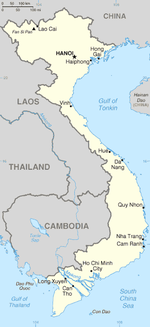
A vineyard is a plantation of grape-bearing vines, grown mainly for winemaking, but also raisins, table grapes and non-alcoholic grape juice. The science, practice and study of vineyard production is known as viticulture. Vineyards are often characterised by their terroir, a French term loosely translating as "a sense of place" that refers to the specific geographical and geological characteristics of grapevine plantations, which may be imparted to the wine itself.

Viticulture or winegrowing is the cultivation and harvesting of grapes. It is a branch of the science of horticulture. While the native territory of Vitis vinifera, the common grape vine, ranges from Western Europe to the Persian shores of the Caspian Sea, the vine has demonstrated high levels of adaptability to new environments, hence viticulture can be found on every continent except Antarctica.

Missouri wine refers to wine made from grapes grown in Missouri. German immigrants in the early-to-mid-19th century founded the wine industry in Missouri, resulting in its wine corridor being called the Missouri "Rhineland". Later Italian immigrants also entered wine production. In the mid-1880s, more wine was produced by volume in Missouri than in any other state. Before prohibition, Missouri was the second-largest wine-producing state in the nation. Missouri had the first area recognized as a federally designated American Viticultural Area with the Augusta AVA acknowledged on June 20, 1980. There are now four AVAs in Missouri. In 2017 there were 125 wineries operating in the state of Missouri, up from 92 in 2009.
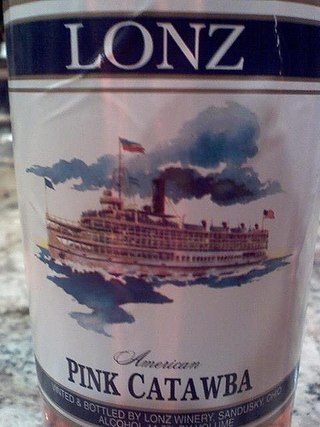
Catawba is a red American grape variety used for wine as well as juice, jams and jellies. The grape can have a pronounced musky or "foxy" flavor. Grown predominantly on the East Coast of the United States, this purplish-red grape is a likely cross of the native American Vitis labrusca and the Vitis vinifera cultivar Semillon. Its exact origins are unclear but it seems to have originated somewhere on the East coast from the Carolinas to Maryland.
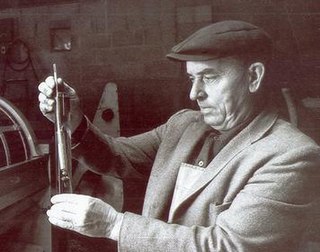
Dr. Konstantin Frank (1899–1985) was a viticulturist and pioneering winemaker of the 1950s in the Finger Lakes region of New York.

Canadian wine is wine produced in Canada. Ontario and British Columbia are the two largest wine-producing provinces in Canada, with two-thirds of the Canada's vineyard acreage situated in Ontario. However, wine producing regions are also present in other provinces, including Alberta, Quebec, New Brunswick and Nova Scotia.
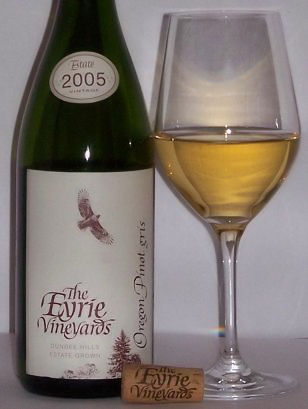
Wine has been produced in the United States since the 1500s, with the first widespread production beginning in New Mexico in 1628. Today, wine production is undertaken in all fifty states, with California producing 84 percent of all US wine. The North American continent is home to several native species of grape, including Vitis labrusca, Vitis riparia, Vitis rotundifolia, and Vitis vulpina, but the wine-making industry is based almost entirely on the cultivation of the European Vitis vinifera, which was introduced by European settlers. With more than 1,100,000 acres (4,500 km2) under vine, the United States is the fourth-largest wine producing country in the world, after Italy, Spain, and France.

Washington wine is a wine produced from grape varieties grown in the U.S. state of Washington. Washington ranks second in the United States in the production of wine. By 2017, the state had over 55,000 acres (220 km2) of vineyards, a harvest of 229,000 short tons (208,000 t) of grapes, and exports going to over 40 countries around the world from the 940+ wineries located in the state. While there are some viticultural activities in the cooler, wetter western half of the state, the majority (99.9%) of wine grape production takes place in the shrub-steppe eastern half. The rain shadow of the Cascade Range leaves the Columbia River Basin with around 8 inches (200 mm) of annual rain fall, making irrigation and water rights of paramount interest to the Washington wine industry. Viticulture in the state is also influenced by long sunlight hours and consistent temperatures.

Texas has a long history of wine production. The sunny and dry climate of the major winemaking regions in the state have drawn comparison to Portuguese wines, in addition to other regions in Europe like Spain, France, and Italy. Some of the earliest recorded Texas wines were produced by Spanish missionaries in the 1650s near El Paso. Texas ranked as the fifth largest wine producing state by 2019.

Mississippi wine refers to wine made from grapes grown in the U.S. state of Mississippi. The hot and humid climate of Mississippi makes it very difficult to cultivate vitis vinifera or French hybrid grapes. The three commercial wineries in Mississippi focus almost entirely on the Muscadine grape, a variety also used for non-alcoholic grape juices, jams, and jellies. Most of the Mississippi Delta AVA, a designated American Viticultural Area, lies within the state boundaries of Mississippi.

California wine production has a rich viticulture history since 1680 when Spanish Jesuit missionaries planted Vitis vinifera vines native to the Mediterranean region in their established missions to produce wine for religious services. In the 1770s, Spanish missionaries continued the practice under the direction of the Father Junípero Serra who planted California's first vineyard at Mission San Juan Capistrano.

Turkish wine is wine made in the transcontinental Eurasian country Turkey. The Caucasus region, where Armenia, Azerbaijan, Georgia and Iran are located, played a pivotal role in the early history of wine and is likely to have been one of the earliest wine-producing regions of the world.

The modern Indian Wine market is small but growing; annual per capita consumption of wine in the country is a mere 9 milliliters, approximately 1/8000th that of France. The main reason for this can be attributed to the fact that Indians preference for hard liquor and beer boasts nearly 98% of market share whereas wine with low ABV only has 2% market share. The viticulture in India has a long history dating back to the time of the Indus Valley civilization when grapevines were believed to have been introduced from Persia. Winemaking has existed throughout most of India's history but was particularly encouraged during the time of the Portuguese and British colonization of the subcontinent. The end of the 19th century saw the phylloxera louse take its toll on the Indian wine industry followed by religious and public opinion moving towards the prohibition. Following the country's independence from the British Empire, the government encouraged vineyards to convert to table grape and raisin production. In the 1980s and 1990s, a revival in the Indian wine industry took place as international influences and the growing middle class started increasing demand for the beverage. By the turn of the 21st century, demand was increasing at a rate of 20-30% a year. The city of Nashik in the state of Maharashtra is called the "Wine Capital of India."

The Hermann AVA is an American Viticultural Area located in Gasconade County, Missouri, and entirely contained within the larger Ozark Mountain AVA. The wine appellation is located on the southern side of the Missouri River near the town of Hermann, about halfway between St. Louis and Jefferson City. The AVA covers the northernmost hills of the Ozark Plateau with many of the 200 acres of vineyards planted along hillside locations. As of 2007, seven wineries were producing wine in appellation, including Missouri's largest winery, Stone Hill Winery.

The Finger Lakes AVA is an American Viticultural Area located in Upstate New York, south of Lake Ontario. It was established in 1982 and encompasses the eleven Finger Lakes, but the area around Canandaigua, Keuka, Seneca, and Cayuga Lakes contain the vast majority of vineyard plantings in the AVA. Cayuga and Seneca Lakes each have their own American Viticultural Areas completely contained within the Finger Lakes AVA. The Finger Lakes AVA includes 11,000 acres (4,452 ha) of vineyards and is the largest wine-producing region in New York State.

The Seneca Lake AVA is an American Viticultural Area around Seneca Lake in Upstate New York. The wine appellation is entirely contained within the larger Finger Lakes AVA, and includes portions of Ontario, Schuyler, Seneca, and Yates counties. Seneca Lake is a glacial lake about 35 miles (56 km) long and up to 600 feet (180 m) deep. The lake does not freeze in winter, and acts as a giant heat storage unit for the vineyards surrounding the lake, extending the growing season. The most commercially important grape variety in the region is Riesling, although a wide variety of Vitis vinifera and French hybrid grapes are grown.
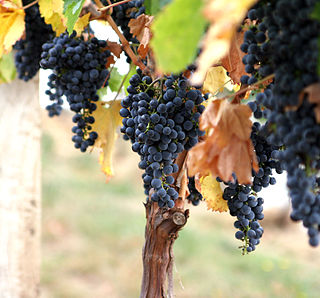
The annual growth cycle of grapevines is the process that takes place in the vineyard each year, beginning with bud break in the spring and culminating in leaf fall in autumn followed by winter dormancy. From a winemaking perspective, each step in the process plays a vital role in the development of grapes with ideal characteristics for making wine. Viticulturalists and vineyard managers monitor the effect of climate, vine disease and pests in facilitating or impeding the vine's progression from bud break, flowering, fruit set, veraison, harvesting, leaf fall and dormancy-reacting if need be with the use of viticultural practices like canopy management, irrigation, vine training and the use of agrochemicals. The stages of the annual growth cycle usually become observable within the first year of a vine's life. The amount of time spent at each stage of the growth cycle depends on a number of factors-most notably the type of climate and the characteristics of the grape variety.

The use of vine training systems in viticulture is aimed primarily to assist in canopy management with finding the balance in enough foliage to facilitate photosynthesis without excessive shading that could impede grape ripening or promote grape diseases. Additional benefits of utilizing particular training systems could be to control potential yields and to facilitate mechanization of certain vineyard tasks such as pruning, irrigation, applying pesticide or fertilizing sprays as well as harvesting the grapes.

Chateau Grand Traverse is a Michigan winery located in the Old Mission Peninsula AVA around Traverse City. The winery was founded by Edward O'Keefe Jr. and is notable for having the first large-scale planting of Vitis vinifera in Michigan. O'Keefe and Chateau Grand Traverse were also the driving force behind the establishment of an American Viticultural Area on the Old Mission Peninsula back in the 1980s when the estate was the only commercial winery on the peninsula. In 1980, the winery produced Michigan's first commercial ice wine and the 1987 vintage of Chateau Grand Traverse Johannisberg Riesling Ice Wine was served at the presidential inauguration of George H. W. Bush.

The Okanagan Valley wine region, located within the region of the same name in the British Columbia Interior, is Canada's second-largest wine producing area. Along with the nearby Similkameen Valley, the approximately 8,619 acres of vineyards planted in the Okanagan account for more than 80% of all wine produced in British Columbia, and are second in economic importance for wine production to the Niagara Peninsula of Ontario. Some 182 licensed wineries existed from south to north in the valley in 2018, with many situated along the 135 km (84 mi)-long Okanagan Lake and its tributaries and downstream lakes, including Skaha Lake, Vaseux Lake, and Osoyoos Lake. The Okanagan has diverse terrain that features many different microclimates and vineyard soil types, contributing characteristics which are part of an Okanagan terroir.

